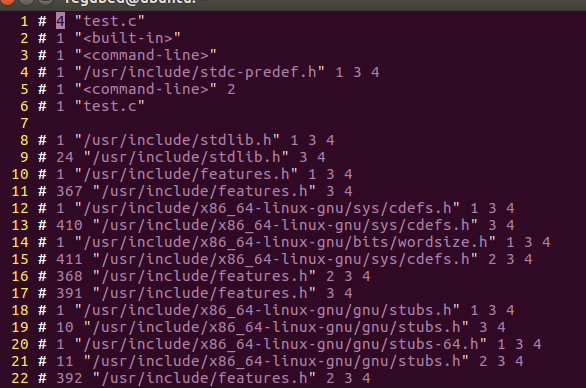gcc编译文件过程
.c文件到 .i文件 到.s(汇编文件) 到.o文件,再到可执行文件
.c到.i
实操一下:
test.c文件如下 :
1 2 #include <stdlib.h> 3 #include <stdio.h> 4 int main() 5 { 6 char buf[8]={0}; 7 int n = snprintf(buf, 8, "%s", "1234567890"); 8 printf("buf: %s ", buf); 9 printf("n: %d ", n); 10 11 }
gcc -E test.c -o test.i,文件过大,只显示一部份

gcc -s test.i
vim test.s
test.s内容如下:
7 .LC2: 8 .string "buf: %s " 9 .LC3: 10 .string "n: %d " 11 .text 12 .globl main 13 .type main, @function 14 main: 15 .LFB2: 16 .cfi_startproc 17 pushq %rbp 18 .cfi_def_cfa_offset 16 19 .cfi_offset 6, -16 20 movq %rsp, %rbp 21 .cfi_def_cfa_register 6 22 subq $32, %rsp 23 movq %fs:40, %rax 24 movq %rax, -8(%rbp) 25 xorl %eax, %eax 26 movq $0, -16(%rbp) 27 leaq -16(%rbp), %rax 28 movl $.LC0, %ecx
汇编代码到 .o文件
gcc -c test.s 生成 test.o

生成二进制文件
gcc -c test.o -o test
